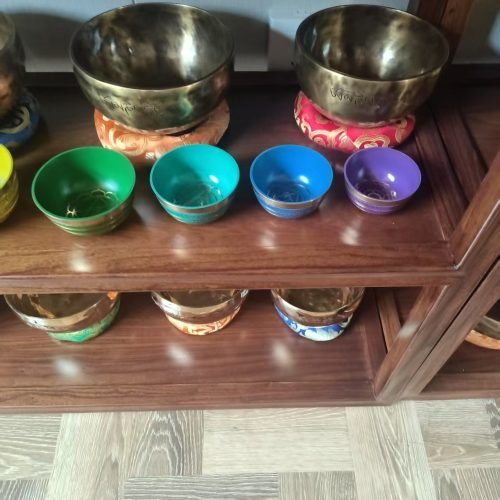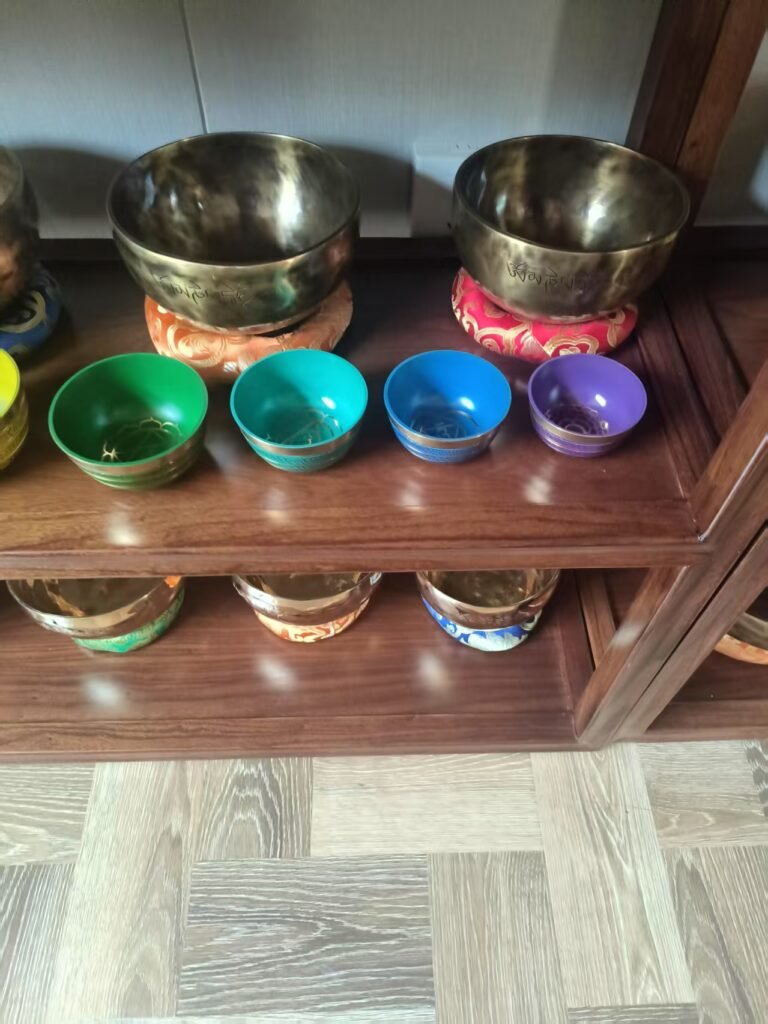

Your singing bowl represents far more than a musical instrument—it embodies centuries of craftsmanship, spiritual tradition, and healing potential that deserves careful stewardship to preserve its beauty, functionality, and transformative power for generations to come. Whether you possess a handcrafted Tibetan bowl passed down through generations, a precision-tuned crystal bowl, or a contemporary creation from skilled artisans, proper care ensures that your investment continues to provide the pure, resonant tones that make these instruments so valuable for meditation, healing, and spiritual practice.
The art of singing bowl care combines practical maintenance techniques with reverent appreciation for these sacred instruments’ cultural significance and healing properties. Like any fine instrument, singing bowls respond to thoughtful care with enhanced performance, extended lifespan, and maintained beauty that reflects the respect they deserve as tools for personal transformation and healing work.
Understanding how to care for your singing bowl properly protects not only your financial investment but also preserves the instrument’s capacity to facilitate deep meditation, promote healing, and connect you with the ancient traditions that gave birth to these remarkable tools. This comprehensive guide will explore the fundamental principles of singing bowl care, from daily maintenance routines to specialized preservation techniques that ensure your bowl remains a trusted companion on your journey toward greater peace, healing, and spiritual awareness.
Through proper care, your singing bowl will continue to offer its gifts of harmony and healing while maintaining the pristine condition and optimal acoustic properties that make it a valuable addition to your spiritual practice and healing toolkit.

Traditional singing bowls crafted from seven sacred metals represent sophisticated metallurgical achievements that combine spiritual symbolism with practical acoustic engineering. The legendary seven-metal composition—gold (Sun), silver (Moon), mercury (Mercury), copper (Venus), iron (Mars), tin (Jupiter), and lead (Saturn)—creates alloys with unique properties that require specific care approaches to maintain their integrity and performance.
Each metal contributes distinct characteristics to the bowl’s overall properties, with gold providing corrosion resistance and tonal warmth, silver adding brightness and antimicrobial properties, copper contributing resonance and durability, and the other metals creating complex harmonic relationships that produce the rich, layered tones characteristic of fine singing bowls.
Modern metal singing bowls often utilize bronze or brass alloys that offer excellent acoustic properties while being more practical and affordable than traditional seven-metal compositions. These contemporary alloys still require careful maintenance to prevent oxidation, maintain surface finish, and preserve the acoustic qualities that make them effective healing instruments.
The manufacturing process significantly affects a bowl’s care requirements, with hand-forged bowls often displaying subtle irregularities and work-hardened surfaces that respond differently to cleaning and maintenance compared to machine-made bowls with uniform thickness and consistent surface treatments.
Understanding your bowl’s specific metal composition helps determine appropriate cleaning methods, storage requirements, and maintenance schedules that protect its unique characteristics while preserving its acoustic and aesthetic qualities for optimal performance and longevity.
Crystal singing bowls manufactured from pure quartz present unique care challenges due to their pristine acoustic properties and inherent material characteristics that differ dramatically from metal bowls. The silicon dioxide composition creates instruments with remarkable acoustic clarity and frequency stability, but also introduces brittleness and temperature sensitivity that require specialized care approaches.
The high-temperature manufacturing process that creates crystal bowls results in internal stresses and molecular structures that can be affected by thermal shock, mechanical impact, and chemical exposure in ways that permanently alter the bowl’s acoustic properties or structural integrity.
Pure quartz’s non-porous surface resists most chemical contamination while being vulnerable to scratching, chipping, and stress fractures that can compromise both appearance and acoustic performance. The transparency of crystal bowls makes even minor surface damage highly visible, requiring extra attention to prevention and gentle handling techniques.
Crystal bowls’ piezoelectric properties mean they can generate electrical charges under mechanical stress, making them sensitive to static electricity and requiring antistatic precautions during cleaning and handling to prevent dust attraction and potential electrical discharge that might affect sensitive individuals.
The precision tuning of crystal bowls to specific frequencies makes them particularly sensitive to structural changes that can affect their acoustic properties, requiring care approaches that prioritize maintaining the bowl’s exact dimensions and surface characteristics that determine its tonal qualities.
Different singing bowl types require tailored care approaches that account for their unique characteristics, intended uses, and value considerations. Antique and vintage bowls often possess historical and cultural significance that makes preservation of original condition paramount, even when this conflicts with optimal acoustic performance.
Size variations significantly affect care requirements, with larger bowls requiring more substantial storage and handling systems while being generally more robust, and smaller bowls needing delicate handling but being more portable and easier to protect during transport and storage.
Thickness variations create different vulnerabilities, with thin-walled bowls offering superior acoustic sensitivity but greater fragility, while thick-walled bowls provide durability at the cost of some acoustic subtlety, requiring adjusted handling and cleaning techniques.
Surface treatments including polished, matte, etched, or decorated finishes each require specific care approaches that maintain their appearance while preserving acoustic properties, with some treatments being more forgiving of minor damage while others showing every imperfection.
Bowl value considerations—whether primarily functional, collectible, or investment-oriented—influence care decisions by balancing preservation priorities with practical use requirements, sometimes favoring protective storage over regular use or vice versa depending on the owner’s primary objectives.
Establishing consistent daily cleaning routines protects your singing bowl from accumulated damage while maintaining its appearance and acoustic properties through regular attention to small maintenance tasks that prevent larger problems from developing over time.
Pre-use preparation involves creating clean environments, ensuring clean hands, and checking for any obvious damage or contamination that might affect the session or indicate developing problems requiring attention before use continues.
Post-use care should become automatic, involving gentle dust removal, fingerprint cleaning, moisture elimination, and basic inspection that identifies any immediate concerns while establishing habits that protect your investment through consistent attention to detail.
Regular deep cleaning schedules complement daily maintenance by addressing accumulated contamination and wear that escape daily attention, typically involving more thorough cleaning methods and detailed inspection procedures that maintain optimal condition over extended periods.
Tool selection for cleaning tasks emphasizes gentle, appropriate materials that accomplish cleaning objectives without introducing scratches, chemical damage, or residue that might affect appearance or acoustic properties, with emphasis on soft cloths, appropriate cleaning solutions, and specialized tools for specific cleaning challenges.
Metal singing bowl cleaning requires understanding the specific alloy composition and surface treatment to select appropriate cleaning methods that remove contamination while preserving protective finishes and avoiding chemical reactions that might damage the metal or alter its properties.
Gentle cleaning solutions including mild dish soap, specialized metal cleaners, or traditional cleaning methods using natural ingredients can effectively remove most contamination while avoiding harsh chemicals that might cause corrosion, discoloration, or acoustic changes.
Mechanical cleaning techniques focus on gentle methods that remove embedded dirt and oxidation without scratching or wearing away surface material, using appropriate tools and techniques that clean effectively while preserving the bowl’s structural and aesthetic integrity.
Crystal bowl cleaning emphasizes avoiding thermal shock, chemical damage, and mechanical impact that could crack or chip the brittle material, typically involving room-temperature water, mild cleaning solutions, and gentle handling techniques that prioritize safety over cleaning speed.
Decorated or treated surfaces require specialized approaches that protect decorative elements, surface treatments, or special finishes while achieving adequate cleaning, often involving research into appropriate methods or consultation with experts familiar with specific treatment types.
Understanding common contamination sources helps develop effective prevention strategies that minimize cleaning requirements while protecting bowl integrity through environmental control, handling protocols, and storage practices that reduce exposure to damaging conditions.
Environmental factors including dust, humidity, temperature fluctuations, and chemical vapors can affect singing bowls over time, requiring attention to storage locations, air quality, and environmental control that minimizes exposure to potentially damaging conditions.
Handling protocols that emphasize clean hands, appropriate support, gentle movements, and awareness of potential hazards help prevent both obvious damage and subtle contamination that accumulates over time to affect appearance and performance.
Storage practices that protect bowls from dust, moisture, temperature changes, and physical damage create stable environments that minimize maintenance requirements while providing security against accidents, theft, or environmental damage.
Early problem detection through regular inspection, listening tests, and documentation helps identify developing issues before they become serious problems, enabling preventive interventions that maintain optimal condition while avoiding costly repairs or replacement.
Creating optimal storage environments protects singing bowls from environmental factors that can cause gradual damage or sudden catastrophic failure, requiring attention to temperature, humidity, air quality, and lighting conditions that preserve both acoustic and aesthetic properties.
Temperature control involves maintaining stable conditions that minimize thermal stress while avoiding extremes that could cause cracking, warping, or metallurgical changes, typically requiring climate-controlled environments for valuable or sensitive instruments.
Humidity management prevents corrosion in metal bowls while avoiding condensation that could cause thermal shock in crystal bowls, typically involving monitoring equipment and environmental control systems that maintain optimal conditions year-round.
Air quality considerations include protection from dust, chemical vapors, pollutants, and other airborne contaminants that can accumulate on surfaces or cause chemical reactions leading to corrosion, discoloration, or acoustic changes over time.
Lighting management protects bowls from ultraviolet damage while providing adequate illumination for inspection and handling, typically involving appropriate light sources and UV filtering that enable use while preventing photochemical damage.

Individual storage solutions protect each bowl from physical contact with other objects while providing cushioning, environmental isolation, and organized access that facilitates regular use while maintaining protection during storage periods.
Protective materials selection emphasizes chemically inert, physically appropriate materials that provide cushioning and environmental isolation without introducing contaminants, off-gassing, or reactions that might affect the bowl’s condition over time.
Storage container design considerations include size appropriateness, material compatibility, access convenience, and protection level that match the bowl’s value, use frequency, and risk factors while providing adequate security and environmental control.
Collective storage systems for multiple bowls require spacing, isolation, and organization strategies that prevent contact damage while providing efficient space utilization and convenient access for regular use or periodic inspection.
Labeling and documentation systems help track storage conditions, maintenance schedules, and bowl history while providing information needed for insurance, resale, or inheritance planning that preserves value and facilitates proper care continuity.
Short-distance movement within homes or studios requires awareness of potential hazards, appropriate carrying techniques, and route planning that minimizes risk while enabling convenient access for regular use and maintenance activities.
Portable protection systems for regular transport emphasize convenience, adequate protection, and ease of use that encourage proper protection habits while providing security against the common hazards encountered during routine transportation.
Travel packaging for longer distances or shipping requires more substantial protection systems that provide impact resistance, environmental isolation, and damage prevention during handling by others who may not understand the bowl’s value or fragility.
Transportation risk assessment involves identifying potential hazards, evaluating protection adequacy, and developing contingency plans that minimize loss probability while ensuring adequate protection for the specific transportation scenario and bowl characteristics.
Insurance and documentation considerations for valuable bowls help protect financial investments while providing evidence needed for claims processing in case of loss or damage during transportation or storage.
Regular acoustic assessment helps identify gradual changes in your bowl’s sound quality that might indicate developing problems or normal aging processes, enabling appropriate responses that maintain optimal performance while protecting your investment.
Listening test protocols establish baselines and track changes over time using consistent methods that provide reliable information about acoustic condition while accounting for environmental factors and human perception variables that might affect assessments.
Recording and comparison techniques create permanent records of your bowl’s acoustic signature that enable objective comparison over time while documenting condition for insurance, resale, or repair purposes.
Professional assessment services can provide expert evaluation of acoustic condition and recommendations for maintenance or repair when amateur assessment proves inadequate or when valuable instruments require professional documentation.
Documentation systems that track acoustic condition, maintenance history, and usage patterns help identify trends and optimize care schedules while providing valuable information for future care decisions or professional consultations.
Structural integrity requirements for optimal acoustic performance include maintaining precise dimensions, surface smoothness, and material properties that determine the bowl’s acoustic characteristics and require protection through appropriate handling and environmental control.
Environmental factors including temperature, humidity, and atmospheric pressure can temporarily or permanently affect acoustic properties, requiring understanding of these influences and appropriate accommodation in storage, use, and assessment activities.
Usage patterns and playing techniques can gradually affect acoustic properties through wear, stress, or damage accumulation, requiring awareness of these effects and appropriate modification of playing techniques or maintenance schedules to preserve optimal sound quality.
Contamination effects on acoustic properties include surface buildup that dampens vibrations or chemical changes that alter material properties, requiring effective cleaning and protection strategies that maintain acoustic clarity while preserving structural integrity.
Age-related changes in acoustic properties reflect normal material aging processes that may be inevitable but can be minimized through proper care, requiring realistic expectations and appropriate adaptation of care strategies as instruments mature.
Routine maintenance effects on acoustic properties demonstrate how proper cleaning, storage, and handling can maintain or even improve sound quality by removing accumulated dampening effects and preserving optimal structural conditions.
Professional restoration services can address more serious acoustic problems through specialized techniques and equipment that exceed amateur capabilities, requiring evaluation of cost-effectiveness and success probability before committing to restoration efforts.
Environmental optimization for acoustic performance involves controlling storage and use conditions that maximize acoustic potential while protecting against factors that degrade sound quality over time.
Realistic expectations for acoustic improvement acknowledge the limitations imposed by original construction quality, accumulated damage, and material aging while identifying opportunities for meaningful enhancement through proper care and maintenance.
Preventive measures that preserve acoustic quality emphasize protection over restoration, focusing on maintaining optimal conditions rather than attempting to reverse damage that proper care could have prevented.
Cleaning challenges represent the most common care problems, involving questions about appropriate products, techniques, and frequencies that balance cleaning effectiveness with protection against damage from over-cleaning or inappropriate methods.
Storage confusion often involves uncertainty about optimal conditions, appropriate containers, and environmental requirements that protect bowls while enabling convenient access for regular use and maintenance activities.
Usage questions frequently concern proper playing techniques, frequency limitations, and care requirements that maintain acoustic properties while preventing damage from inappropriate playing methods or excessive use.
Maintenance scheduling uncertainties involve determining appropriate frequencies and intensities for various care activities while balancing protection objectives with practical constraints and usage requirements.
Sound quality assessment techniques help identify acoustic problems and track changes over time using systematic listening tests, recording comparisons, and professional evaluation when necessary to maintain optimal performance.
Visual inspection protocols provide systematic approaches to identifying physical problems including surface damage, structural issues, and contamination that might affect performance or indicate developing problems requiring attention.
Functional testing methods evaluate overall performance and identify subtle problems that might not be obvious through casual use, providing information needed for maintenance planning and professional consultation when necessary.
Comprehensive evaluation approaches combine multiple assessment methods to provide complete pictures of bowl condition while identifying relationships between different types of problems that might require coordinated solutions.
Immediate damage control procedures minimize further damage when accidents occur, providing step-by-step guidance for protecting bowls and preventing additional problems while arranging for professional help if necessary.
Temporary protection methods provide short-term solutions for maintaining bowl security and condition when permanent solutions are not immediately available, enabling continued protection while arranging for proper long-term solutions.
Professional help coordination involves identifying qualified service providers, communicating effectively about problems and requirements, and ensuring appropriate expertise for specific bowl types and problem categories.
Prevention improvement strategies use problem experiences to strengthen care protocols and reduce future risk through better understanding of vulnerabilities and more effective protection measures.
The foundation of effective singing bowl care rests on understanding that prevention surpasses correction in both effectiveness and economy, making consistent daily attention more valuable than occasional intensive maintenance efforts that attempt to address accumulated neglect.
Regular maintenance schedules create sustainable care patterns that protect your investment while distributing care efforts across manageable daily and weekly activities rather than overwhelming periodic restoration projects that may not fully restore optimal condition.
Professional integration acknowledges that some aspects of singing bowl care require expert knowledge and specialized equipment, making periodic professional assessment and occasional professional services valuable components of comprehensive care programs.
Systematic approaches to care provide more reliable results than ad hoc maintenance efforts, requiring documentation, planning, and consistent execution that ensure all aspects of care receive appropriate attention over time.
Daily care habits should emphasize gentle cleaning, careful handling, and basic inspection that prevent problem accumulation while maintaining awareness of bowl condition through regular use and observation.
Environmental control represents one of the most effective long-term protection strategies, requiring attention to storage conditions, use environments, and transportation protection that minimize exposure to damaging conditions.
Knowledge development through study, experience, and professional consultation enables increasingly effective care while helping bowl owners understand their instruments’ specific requirements and optimal care approaches.
Quality investment in appropriate care tools, storage systems, and professional services provides better long-term value than economy approaches that may compromise protection or require more expensive corrective measures later.
Long-term perspective in care planning acknowledges that singing bowls can provide decades or centuries of service when properly maintained, making current care investments valuable for preserving both functional and financial value over extended periods.
Skill development in care techniques provides increasing capability and confidence while reducing dependence on professional services for routine maintenance, though professional consultation remains valuable for complex problems or valuable instruments.
Community resources including other bowl owners, professional service providers, and educational opportunities can provide support, knowledge, and services that enhance individual care efforts while building networks of expertise and mutual assistance.
Cultural respect for singing bowls’ spiritual and historical significance should guide care decisions, emphasizing preservation of authenticity and traditional values alongside practical maintenance objectives that honor these instruments’ sacred heritage.
Through mindful attention to these principles and practices, your singing bowl will continue to serve as a faithful companion on your spiritual journey, providing the pure, resonant tones that facilitate meditation, healing, and personal transformation while maintaining its beauty and value for future generations who will benefit from your thoughtful stewardship of these remarkable instruments.
The investment of time and attention required for proper singing bowl care pays dividends in enhanced performance, extended lifespan, and maintained beauty that reflect the respect these sacred instruments deserve. Your commitment to excellent care ensures that your bowl will continue offering its gifts of harmony and healing while preserving the traditions and craftsmanship that make these instruments so valuable for spiritual practice and personal development.

